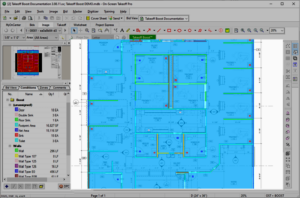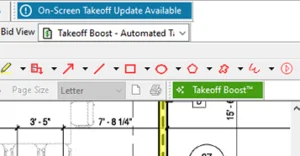Wow. There appears to be no relief in sight for contractors trying to find qualified construction workers. Call it a “nice to have problem” if you like—but the struggle is real. With a record low unemployment rate, most construction firms are worried about where to find the next generation of workers.
In some parts of the country, it is getting even harder to find construction workers. In December 2019 alone, 211 out of 358 metro areas showed increased employment year-over-year, according to federal employment data.
Where is demand the hottest? The Dallas-Plano-Irving, Texas area added the most construction jobs in 2019 (16,700 jobs or 11% increase), according to the Associated General Contractors of America. Other metro areas adding large numbers of construction jobs in 2019 included:
- Los Angeles-Long Beach-Glendale, Calif. (12,300 jobs, 8% increase)
- Las Vegas-Henderson-Paradise, Nev. (9,400 jobs, 14% increase)
- Houston-The Woodlands-Sugar Land, Texas (9,300 jobs, 4% increase)
- San Diego-Carlsbad, Calif. (8,600 jobs, 10% increase).
It’s no surprise that with a nagging labor shortage, many construction firms are having a difficult time keeping pace with demand and growing their businesses. “There are not enough qualified workers in many parts of the country for firms to be able to keep pace with strong demand for work,” explains Ken Simonson, the AGC’s chief economist. “Construction workforce shortages appear to be holding back further job gains in many parts of the country.”
History of Labor Shortage
Today’s skilled labor shortage can trace its roots back to the housing bubble when the industry lost nearly 2 million construction workers. Even as the construction market has come roaring back, many contractors have found it difficult to attract younger workers to replace those baby boomers who are retiring.
According to the U.S. Bureau of Labor Statistics, there were more than 11 million employed in the construction industry in 2018. Of those, a scant 1 million are under age 25, meaning the other 10 million are over age 25. The median age of a worker in the construction industry today is 42.5 years.
Many experts place the blame squarely on high schools who cut vocational training programs or promoted the myth that the only high-income career path requires a four-year degree. Others say builders are partly responsible as rising costs and thin profit margins equate to fewer dollars invested in training the next generation of construction workers.
With baby boomers representing more than 40% of today’s construction workforce, it’s no surprise that the current shortage can be linked directly to the high number of boomers retiring daily. At this rate, the construction industry could lose between 14% and 20% of specific employee groups, including executives, senior managers, field managers, and project managers, over the next five years.
Generation Z Enters the Workforce
With construction backlogs running nearly nine months, there is a strong demand for all positions—from craft workers to project managers and estimators. Whether trying to attract Generation Z (born after 1997) and millennials (born between 1981-1996) or retain Gen X (born between 1965-1980), contractors face a tricky balancing act as they try to accommodate not only millennials and Generation Z, but baby boomers and Gen X workers, too.
At 61 million, Gen Z is the most populous generation since the boomers. It is predicted that more than 20% of the U.S. workforce will be comprised of this generation by the end of 2020. As they come of age, Generation Z is becoming a highly sought group that the construction industry can’t afford to ignore.
The big question will become how to find, attract, train, and retain this group. While Gen Z has much in common with their older-siblings—the millennials—the construction industry will need to invest in understanding what makes these younger employees tick.
Understanding Generation Z
With 10,000 baby boomers reaching retirement age daily, it’s essential to find younger workers to move up through the ranks from the field to the office and beyond. If you’re already comfortable working with millennials, understanding Generation Z shouldn’t be such a leap.
You should keep in mind that millennials and Gen Z both value workplace flexibility as they don’t necessarily enjoy sitting in a cubicle from 9 to 5. It’s not that they lack a strong work ethic as you may find them working hard after-hours. They just put a premium on being able to blend their personal and professional lives.
Some of the differences you may notice are that Generation Z is very entrepreneurial and competitive—maybe more so than the team player attitude you get from millennials. They enjoy a collaborative environment, but experts say they like to push themselves independently.
Another issue that has become apparent is that Gen Z is very oriented toward salary and security. While millennials may have gotten in deep with credit card debt and student loans, some Generation Zers are fearful of debt and are old enough to recall their parents struggling in the last recession. They want to take control, achieve a solid salary, and make better self-directed financial decisions.
In fact, a Robert Half survey found that 95% of Gen Z respondents named career advancement as a top factor when choosing an employer. Of those, 91% said professional development and training opportunities were a priority for their careers.
To better attract this generation, construction firms could outline how these younger workers can move from entry-level apprentice to journeyman to lead man to foreman to general foreman and then to superintendent. This generation would likely welcome a clear career trajectory plan.
Attracting Generation Z with Technology
With the influx of Gen Z, the construction industry will need to adapt their recruiting strategies. One of the things this generation has in common with millennials is their love of technology. As the first true digital natives, Gen Z can’t recall a time before the internet.
Practically born with a smartphone or device in their hands, Generation Z views tech at their go-to solution. While the construction industry has been slow to adopt technology, new technology is having a moment—from BIM software to drones to wearables to virtual reality and 3D modeling technologies. This type of tech is key to attracting Gen Z job seekers and increasing their interest in construction jobs. But don’t expect your young employees to hang around if you’re not willing to evolve and integrate your tech toolbox.
Another way to solve this hiring puzzle is to put a bigger emphasis on making sure your brand has a generally positive online presence. You can recruit online through digital channels like LinkedIn, Facebook, and Twitter. By using social media to promote everything from job openings to showcasing how you use technology, you can integrate how you recruit, hire, and onboard new employees.
Construction firms should also make sure their office is prepared for Gen Z’s love of mobile technology. This generation will expect to use mobile apps to manage their daily life for everything from timecards to project management. Construction firms that are still buried in paper, colored pencils, and fax machines will likely have a hard time attracting younger workers.
No matter the size of your construction business or trade, odds are you will need a hiring strategy when it comes to attracting, finding, and retaining the right talent. If you’re under pressure to improve your hiring process, be sure to download the 2019 How to Hire a Great Estimator Guide now for great in-depth, real-world hiring best practices.



